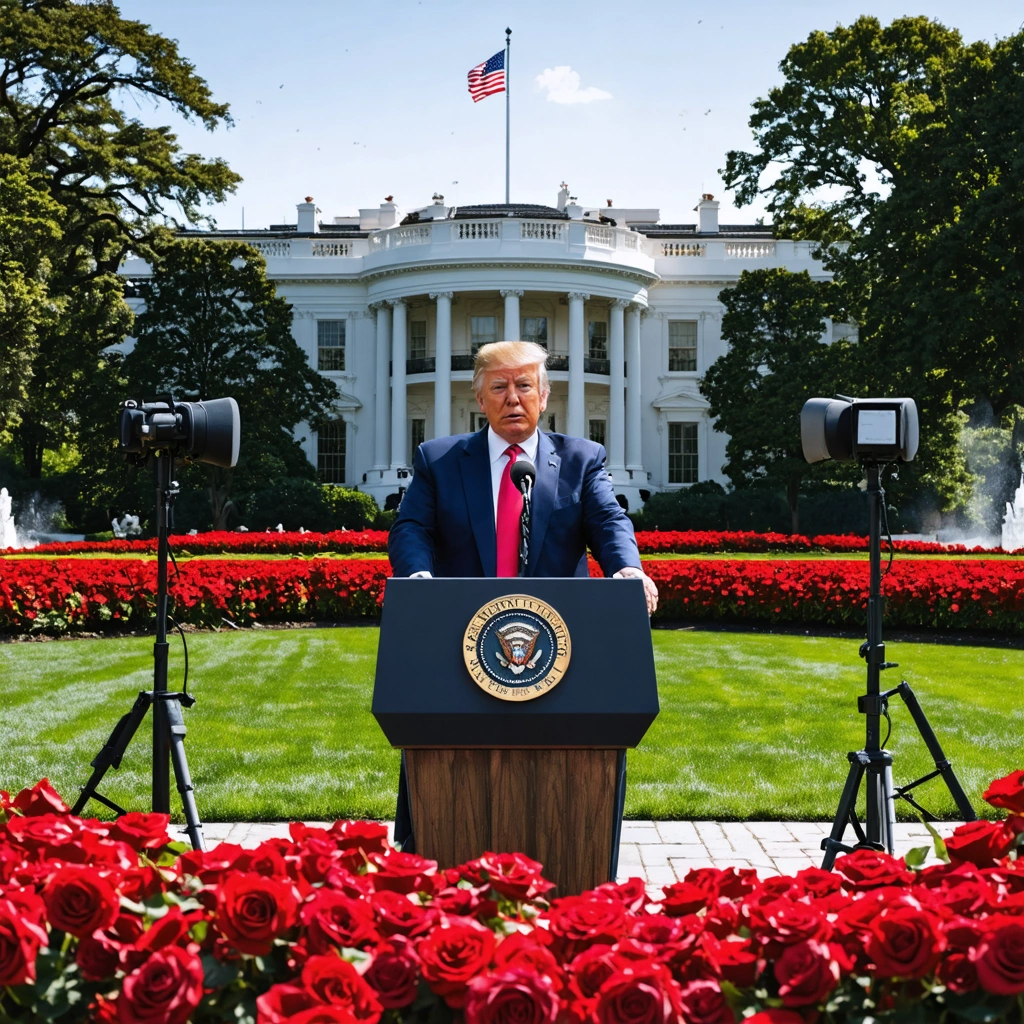
Historic Announcement in the Rose Garden
Today, President Donald Trump addressed an enthusiastic crowd at the White House Rose Garden, launching what he described as a “kind reciprocal” tariff system in celebration of Liberation Day. At the “Make America Wealthy Again” event, he detailed an ambitious plan meant to bolster domestic industries while encouraging worldwide trade balance. Moreover, the President emphasized fairness and mutual respect during his speech, promising to engage directly with international counterparts. In addition, he argued that these tariffs symbolize an era of renewed economic nationalism and self-reliance. Consequently, his remarks resonated with supporters who celebrated the policy as a protective measure.
Objectives and Strategic Vision
The President clarified that these tariffs intend to promote American ingenuity and generate wealth domestically. Furthermore, he underscored several strategic objectives:
- Preserve American manufacturing jobs
- Encourage reciprocal actions by trade partners
- Strengthen national security by reducing reliance on foreign imports
Additionally, he insisted that the measures would adapt flexibly to global economic changes. Subsequently, economic advisors assured that periodic evaluations would guarantee transparency and effectiveness. Thus, the initiative not only targets immediate economic advantages but also envisions a sustainable long-term resurgence for the nation’s industrial sector.
Event Atmosphere and Reaction
The Rose Garden venue buzzed with excitement as reporters, dignitaries, and political enthusiasts gathered to witness the unfolding drama. The setting, both ceremonial and vibrant, reflected the President’s determination to communicate his message with clarity. Notably, several influential media outlets lauded the presentation for its innovative approach. Moreover, diverse opinions emerged within the audience. Some critics, while acknowledging the patriotic undertone, argued that diplomatic relationships might fray under such policies. In contrast, supporters celebrated the tariff rollout as a forthright declaration of American economic independence. Indeed, the event combined showmanship with policy-making, resulting in a memorable day characterized by a blend of spectacle and serious intent.
Economic Implications and Detailed Analysis
Analysts and economic experts examined the potential impact of the “kind reciprocal” tariffs with keen interest. Initially, experts reviewed the table below, which outlines key aspects of the tariffs:
| Tariff Category | Rate | Effective Date | Rationale |
|---|---|---|---|
| Steel and Aluminum | 25% | July 4, 2021 | Promote domestic production |
| Consumer Electronics | 15% | July 4, 2021 | Encourage innovative tech |
| Agricultural Goods | 10% | July 4, 2021 | Protect local farming |
Furthermore, analysts noted that the tariffs might generate short-term market fluctuations. In addition, they expect robust discussions among international trade negotiators. Thus, while challenges may arise, the President assured that adaptive measures would mitigate adverse outcomes.
Political and Diplomatic Reactions
Political observers reported mixed reactions from both domestic and international leaders. Several allies expressed cautious optimism and recognized the need for protectionist policies in an increasingly volatile global market. Conversely, some foreign dignitaries issued warnings, urging dialogue before retaliatory measures escalate. Additionally, members of Congress on both sides of the aisle engaged in heated discussions, reflecting a vibrant debate on the merits and risks of the initiative. Equally important, diplomatic channels opened for possible negotiations as nations expressed interest in forging new trade agreements based on reciprocity. Consequently, the policy announcement instigated a series of strategic consultations among world leaders. It remains clear that this bold move intertwines economics with geopolitics in unprecedented ways.
Implementation Roadmap and Future Outlook
Looking ahead, the administration outlined several steps to ensure smooth implementation. First, regulatory agencies will monitor industry impact and consumer prices. Second, periodic assessments will enable adjustments should economic conditions shift unexpectedly. Third, ongoing communications with affected trade partners will smoothen any hurdles encountered along the way. Moreover, the President promised that the initiative represents a dynamic approach, with policies subject to refinement based on real-world results. In summary, the roadmap integrates clear milestones and accountability measures that aim to benefit the broader American economy. Additionally, stakeholders and policymakers remain optimistic that these reciprocal tariffs signal the start of a revitalized era in international trade.
Media Coverage and Broader Impact
Major media networks and print publications provided extensive coverage of the event, emphasizing its historical significance and the President’s dramatic presentation. Reporters described the atmosphere as both celebratory and tense, a reflection of divergent views on the impact of such policies. Interestingly, social media platforms erupted with debates, memes, and spirited discussions, further amplifying the event’s visibility. Additionally, think-tank publications began publishing detailed analyses that forecast potential changes in consumer behavior and industrial productivity. Therefore, the announcement triggered a broad public conversation on economic policy, sovereignty, and fairness in trade. Ultimately, the intersection of policy and public sentiment underscores how transformative decisions resonate across diverse strata of society.
Concluding Reflections
In conclusion, President Trump’s announcement of “kind reciprocal” tariffs on Liberation Day marks a pivotal moment in contemporary trade policy. The narrative he crafted interlaces patriotism with pragmatic economic reform while addressing longstanding trade imbalances. Furthermore, his bold statements and innovative policy structures signal a willingness to challenge conventional economic paradigms. As history unfolds, the international community and domestic stakeholders will observe how these measures influence employment, production, and global competitiveness. Accordingly, while uncertainties persist, the overall sentiment remains one of cautious optimism amid a determined effort to redefine America’s economic destiny. Ultimately, this historic moment invites deeper reflection, vigorous debate, and anticipates forthcoming changes in the global trade environment.


